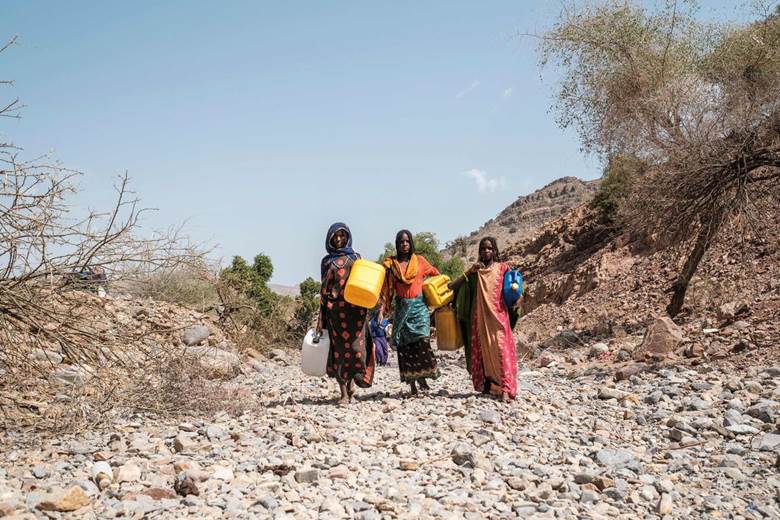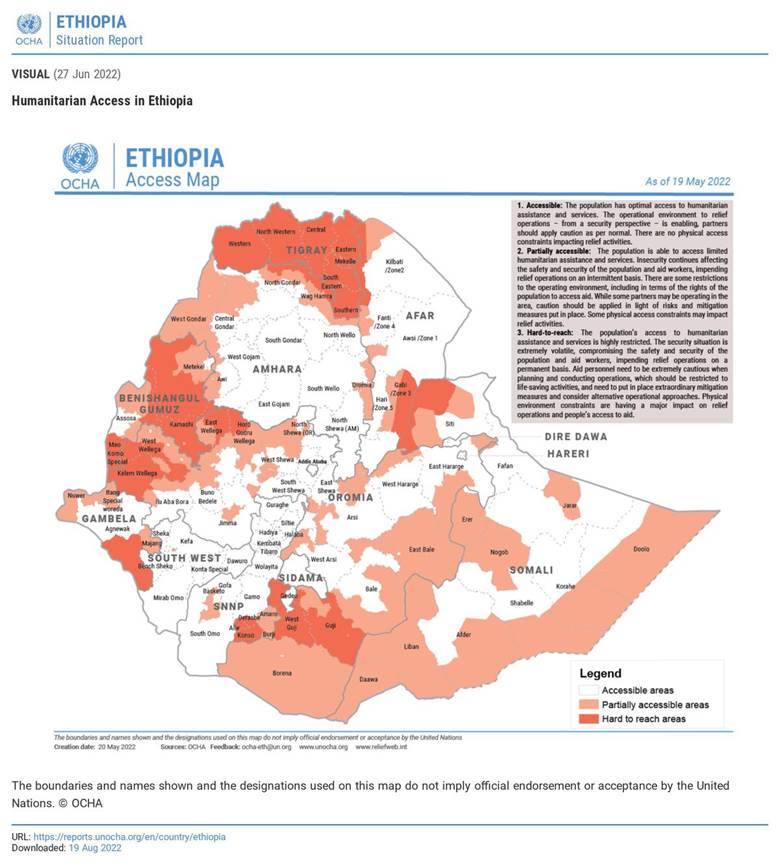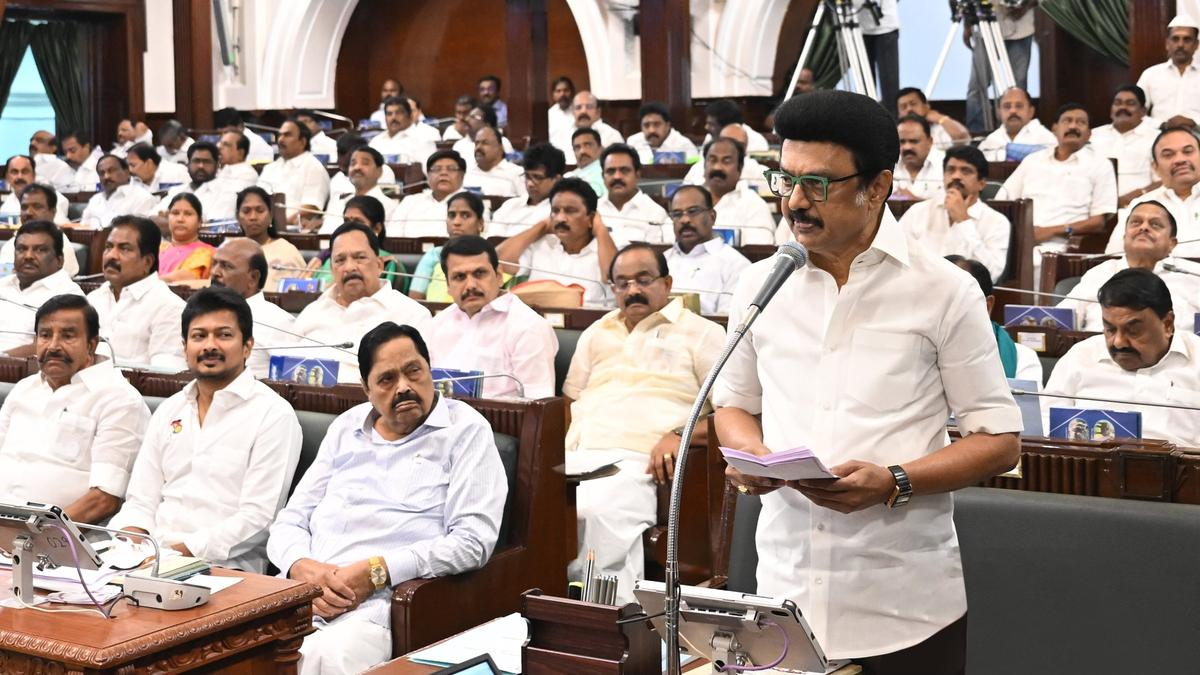Description

Copyright infringement is not intended
Context: Tedros Adhanom Ghebreyesus, director-general of the World Health Organization (WHO), described the humanitarian crisis in Ethiopia’s Tigray region as the “worst disaster on earth”.

Copyright infringement is not intended
More on the news:
- Questioning why the situation was not getting enough attention from the international community, he said: "maybe the reason is the colour of the skin of the people.”
- Nowhere in the world, six million people are sealed off…from basic services, from their own money, from telecom, from food, from medicine.
- Further, the World Food Programme (WFP) said, that the conflict in Ethiopia, which started in November 2020, had left nearly half of Tigray’s population without enough food as aid groups struggled to reach rural areas owing to inadequate fuel supplies.
Details:
- Ethiopia, the second most populous country in Africa, is situated in the strategic Horn of Africa region.
- It is bordered by Eritrea, Djibouti, Sudan, Somalia, and Kenya.
- The country is divided into 10 regions based on the concentration of ethnic groups.
- The Oromo- the largest ethnic group in the country, and Amhara- the second largest group, make up more than 60 per cent of Ethiopia's 115 million people.
- The Tigrayans, meanwhile, constitute around 6-7 per cent and are an ethnic minority.
- In 1975, the ‘Derg’, a Soviet-backed Marxist military dictatorship’ led by Mengistu Haile Mariam was established in Ethiopia and ruled over the country till 1991, when it was ousted.
- The Tigray People’s Liberation Front (TPLF) was formed as a small ethno-nationalist paramilitary group and a political outfit in the 1970s, with its base in the mountains of Tigray. It grew into a formidable force that played a central role in fighting the dictatorship and went on to head the country’s ruling coalition of parties —the Ethiopian People’s Revolutionary Democratic Front (EPRDF)— for nearly three decades.
- TPLF guerrillas were considered war heroes in Addis Ababa when the dictatorship fell in 1991.
- TPLF leader Meles Zenawi became the President and then Prime Minister, overseeing the country’s transition from military rule to a system of ethnic federalism- which meant that while the ruling coalition EPRDF held power at the Centre, regional parties had some powers in ethnic provinces.
- Under Zenawi’s leadership, Ethiopia went through an economic transformation, strengthened ties with the United States to become one of its biggest aid recipients, and enjoyed relative peace among the various ethnic groups despite fighting a fierce border war with Eritrea.
- Although many of its members belonged to the Tigrayan minority, the TPLF reportedly wielded significant influence in the coalition as well as the whole country.
- After Zenawi’s death in 2012, however, ethnic faultlines started to resurface in Ethiopia. The EPRDF in the years of its rule had grown increasingly authoritarian and intolerant of dissent.
- After it won the national election in 2015, the coalition faced popular unrest and resistance led by the Oromos and Amharas for the following two years, leading to the election of a new leader —current Ethiopian Prime Minister Abiy Ahmed.
- An ethnic Oromo, Mr. Ahmed was welcomed as a reformer, who in the first year of his leadership, ended longstanding hostilities and the war with neighbouring Eritrea, lifted the emergency, granted amnesty to thousands of political prisoners, lifted curbs on the media, legalised banned political outfits and dismissed military and civilian leaders who were facing allegations of corruption and other wrongdoing. He was awarded the Nobel Peace Prize in 2019 for his efforts in peacemaking.
What led to the current conflict?
- Things started to change in the subsequent years of Mr. Ahmed’s leadership.
- In late 2019, the former intelligence officer and software engineer dissolved the EPRDF coalition to create a new one- the Prosperity Party, virtually ending TPLF’s reign in Addis Ababa.
- He expressed his ambitious vision of rewriting the power balance in the country, forming an all-encompassing Ethiopian identity and extending political representation to hitherto excluded ethnic groups such as the Oromo, the country’s largest but politically marginalised group.
- But previously dormant ethnic and communal violence grew during his reign, leading to displacement.
- United Nations has said that ethnic violence in the country had risen to “an alarming level” and ethnic intolerance was growing due to the stigmatisation of certain groups.
- The ties between the government and TPLF worsened when the former decided to postpone elections in September 2020, citing the pandemic.
- TPLF held its own elections in Tigray, calling the central government illegitimate.
- In November of that year, the TPLF carried out a pre-emptive strike in Tigray, saying that it was a retaliation to the federal troops Mr. Ahmed had sent for an attack to the borders of Tigray.
- It was after this that Mr. Ahmed declared war on Tigray, beginning the current conflict.
- His government also declared TPLF a terrorist organisation. Joining forces with other ethnic militia and Eritrean troops, Mr. Ahmed managed to capture most of Tigray and gained control of its capital Mekele. On November 28, 2020, he announced that “major military operations were completed”.
- However, this did not end the war. The TPLF, still very influential, regrouped in the northern mountains and later joined forces with a large Oromo militia, forcing the government to retreat from Tigray and even launching incursions into neighbouring regions of Amhara, Afar, and Oromio.

How bad is the humanitarian situation?
- Tigray and its neighbouring regions are facing starvation, absence of medical facilities, no access to their own money due to shut-down banking services, ethnic and physical violence, and raids at the hands of warring forces.
- The government declared a ceasefire on humanitarian grounds but in an effort to break the TPLF in June last year, imposed a blockade on Tigray, shutting power, telecommunications, banking and commercial transit facilities.
- This, aid agencies said, made it impossible to deliver humanitarian, economic, and medical assistance to Tigrayans.
- The U.N. called it “a de facto humanitarian aid blockade.” It noted that just 15 per cent of cash needs for humanitarian operations have entered Tigray since July 2021.
- The U.N. estimated last year that over 90 per cent of Tigray’s people needed emergency food aid— a total of 5.2 million.
- It was estimated that 400,000 and 900,000 people were facing famine conditions in Tigray.
- The United Nations High Commissioner for Refugees (UNHCR) said in July this year: “the humanitarian situation across Northern Ethiopia is extremely concerning, with more than 2.6 million internally displaced people (IDPs), over 240,000 returnees and more than 97,000 refugees & asylum-seekers in the Afar, Amhara and Tigray Regions.”
https://indianexpress.com/article/explained/explained-global/explained-tigray-crisis-who-chief-ignored-racism-8115334/















